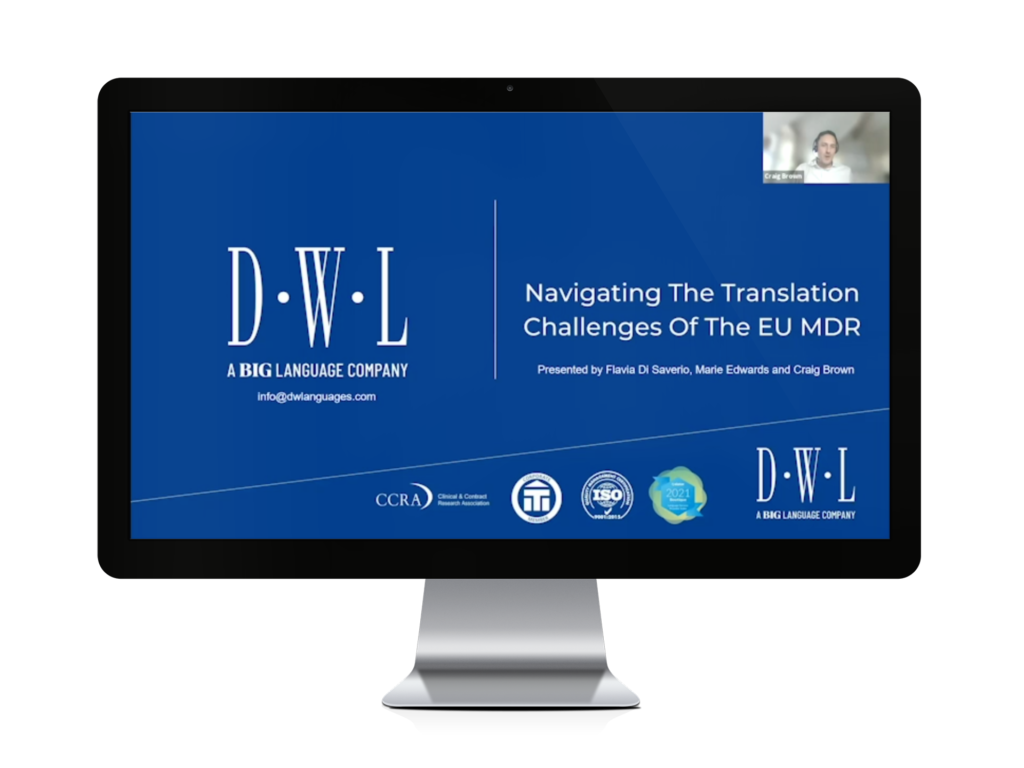Quality is at the heart of everything we do at DWL, which is why we are continuously investing in the knowledge, tools, and technologies that we provide to our valued network of translators. We organize regular webinars and training sessions to update our linguists and partners on the latest technical developments and what they might mean for service delivery in the future. Our October webinar on machine translation post-editing (MTPE) is just one recent example.
Why is machine translation important?
Depending on who you speak to, machine translation (MT) is either disrupting the translation industry for the good or an overhyped, low-quality race to the bottom on price. Of course, the reality is somewhere between those two extremes.
Technology provides us with valuable tools to streamline our work, automate manual and routine tasks, and reduce the risk of error. However, it cannot rival the knowledge and skill of a specialist human translator, especially in sensitive fields, such as the life sciences.
Patient safety and commercial success rely on clarity and accuracy in medical translations. You can’t simply click on a button to produce a translation – and hope for the best.
That’s why DWL believes in the selective application of MT technology. Our goal is to harness its potential while sidestepping its shortfalls. This requires time and effort, as well as financial investment into the MT technology itself.
Building quality into machine translation takes time
For example, MTPE (machine translation post-editing) is a crucial part of building quality into the MT process. It involves implementing feedback from previous translation projects regularly into the MT engine (known as post-editing or revision) so that the engine will learn from its mistakes and correct them on future projects.
This feedback needs to be presented in a specific way if the engine is to incorporate the data effectively, however. That is why preparing MTPE input was one of the key topics in the recent webinar our Neural Machine Translation (NMT) Unit held for translators and partners in October. It also set out in more detail what MTPE means in practice, how to overcome inherent challenges and solutions, and addressed common translator concerns about the process.
Machine translation is a tool, not a replacement
Using an MT solution does not have to mean sacrificing quality for speed or cost. Many of today’s engines are already far superior to the free online tools that may automatically leap to mind, as well as far more secure. However, they do not replace the need for specialist human translators.
Our longstanding network of translators is one of our most valued assets, which is why we were delighted to include and involve them in the dialogue around this emerging technology. Based on the positive feedback we received after the event, they were similarly excited at the potential of MT to assist them in their work.
Many contacted us after the event to thank us for making the content not only instructional but enjoyable. “It was very informative and you were certainly able to clear up a lot of the questions and concerns linguists have regarding MTPE,” commented one of our attendees, while others said: “It was a pleasure to attend your presentation for its content and professionalism!”, “I enjoyed it very much” and “I appreciate that it was run extremely efficiently.”
For more on machine translation, read our latest blog post ‘Separating Hype from Reality: Emerging Practices in Machine Translation’.






